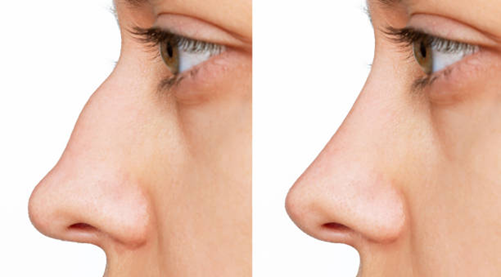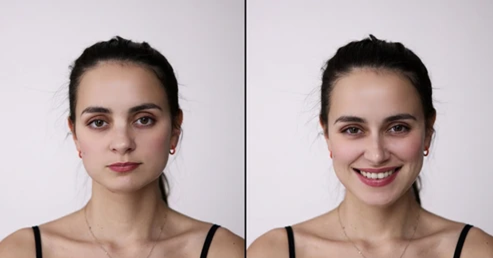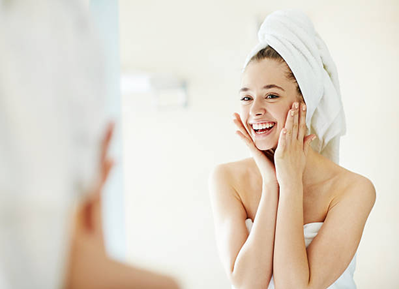
Rhinoplasty, often referred to as a nose job, is a popular cosmetic surgery that alters the shape and size of the nose. Whether performed for cosmetic or medical reasons, rhinoplasty can drastically improve one’s facial harmony and self-confidence. But what happens after the surgery? How does your nose evolve over time? One of the most significant milestones in the rhinoplasty recovery journey is the 1-year mark. So, what can you expect 1 year after rhinoplasty?
Dr. Viral Desai, an esteemed plastic and cosmetic surgeon in Mumbai, shares that by the one-year point, most of the swelling will have subsided, and the final results will start to reveal themselves. The changes can be quite dramatic, but it’s important to understand the nuances of this period.
With years of experience and a reputation for delivering exceptional results, Dr. Desai specializes in providing both functional and aesthetic rhinoplasty procedures. His expertise and personalized approach ensure that each patient receives tailored care, making him one of the most preferred experts for rhinoplasty in Mumbai. Whether you’re undergoing surgery for cosmetic reasons or to improve breathing, Dr. Desai’s guidance will help you achieve a natural, harmonious look.
In this blog, we will discuss the changes that occur one year after rhinoplasty, how to plan for your daily life, and how to maintain the results of your rhinoplasty surgery.
What Changes Occur 1 Year After Rhinoplasty?

The transformation continues even after the bandages are removed. One year after rhinoplasty, you can notice minor but perceptible changes since your nose is still adapting to its new shape. Swelling, although well settled, can continue to exist in small amounts, especially at the end of the nose. This is a healing process and will sort itself out. At the one-year mark, your nose should have distinct contours, and the skin should have adjusted to the new underlying structure.
The bone and cartilage underneath have healed, and your nose structure is now more settled and permanent. Some patients may experience slight alterations to the angle or shape of the nose, but the overall structure will be established. Your nose will be more balanced, symmetrical, and highlight your facial features. Dr. Desai explains that the outcome will continue to improve after the initial year, but most patients are thrilled with the result at this time.
Wondering if you can return to your normal routine? Let’s dive into the activities you’ll be able to enjoy a year post-surgery.
Regular Routine 1 Year After Rhinoplasty

Return to Daily Life
The majority of patients can return to their daily activities like work, exercise, and social events around the one-year point.
Physical Exercise
You can start activities like running, weightlifting, and swimming, but avoid any trauma to the nose in contact sports for a few months longer.
Sensitivity
There can still be a bit of sensitivity around the nose, but this should no longer interfere with daily activities.
Skincare
Use a gentle skincare regimen to avoid irritating the skin. Use non-abrasive products, especially in the area surrounding the treated site, says Dr. Desai.
Sun Protection
Shield the skin of nose from sun to avoid pigmentation and damage.
Makeup
You may use makeup, but be careful around the surgical wound in order not to irritate and disrupt the healing process.
Avoiding Trauma
While your nose is mostly returned to normal, you still need to watch out for direct contact or blow to the region for quite some time.
How can you ensure your rhinoplasty results last? Let’s discuss how to keep your nose looking great long-term.
Tips for Preserving Your Rhinoplasty Results Over Time
Sun Protection
Always apply a high-SPF sunblock on the nose in order to prevent damage from UV rays and maintain skin elasticity.
Healthy Lifestyle
Eat normally and maintain a regular exercise routine to have healthy skin and body, which helps in long-term effects.
Avoid Smoking
Smoking can delay the flow of blood and retard healing, thus quitting smoking is recommended in order to have optimum effects.

Limit Alcohol
Consuming excess alcohol can impact your skin health and healing process, hence moderation is a must.
Gentle Skincare
Apply gentle, non-comedogenic skincare products to avoid disrupting the delicate skin around your nose.
Regular Check-ups
Regularly follow up with your surgeon to monitor your progress and rectify any problem at the earliest.

Refrain from Trauma
Take care to avoid any trauma or impact to the nose, particularly while engaging in sports or other activities that tend to exert pressure on the region.
Keep Yourself Hydrated
Consumption of adequate amounts of water benefits your skin’s health and helps sustain the outcome.
How does rhinoplasty affect your emotions? Let’s explore the mental and emotional changes that come with the surgery.
Psychological Effects 1 Year Post-Rhinoplasty

Emotional and psychological well-being also matters. One of the most apparent changes with rhinoplasty is the increase in self-esteem and confidence. Patients comment on feeling more comfortable with themselves and even a boost in social and professional life. But psychological effects of rhinoplasty can be deep-seated. With any significant cosmetic procedure, you need to recognize the emotional adjustment and be sure that you feel good about your decision.
Dr. Desai highlights that emotional recovery is as important as physical recovery. The first year is a time of adjustment, not only physically but psychologically as well. Realistic expectations, communication with your surgeon, and support from family and friends can smooth you through this process.
Not sure when to seek medical help after rhinoplasty? Let’s discuss the signs that require a consultation.
When to Seek Medical Attention

Severe Pain
Sudden, intense pain that won’t subside even with medicine.
Excessive Swelling
Abnormal swelling that doesn’t improve or gets worse over time.
Changes in Shape
Noticeable changes or distortion of your nose.
Breathing Issues
Shortness of breath or trouble breathing through the nose or any compromised airflow
Infection Signs
Redness, swelling, or pus at the surgical site, which may indicate infection.
Numbness or Loss of Sensation
Numbness or loss of sensation which won’t improve.
Discomfort in the Nose
If anything seems to be wrong with the structural changes, especially if it does not align with previous consultations.
Dr. Desai is keen on follow-up consultations being essential despite everything appearing to be fine to ensure long-term effects. Most issues that occur are manageable and can be fixed with early intervention.
Ready to embrace your new look confidently? Get in touch with a rhinoplasty expert to discuss your recovery and future care.
Conclusion
The journey doesn’t end after surgery. 1 year after rhinoplasty is an exciting milestone. By this time, you’ll likely be seeing the final, natural results of your surgery, and you’ll be able to embrace your new appearance confidently. The key to long-lasting satisfaction is regular care, a healthy lifestyle, and periodic check-ins with your surgeon. With the expertise of professionals like Dr. Viral Desai, you can be assured that your rhinoplasty results will continue to shine.
Frequently Asked Questions
Will the shape of my nose continue to change after one year?
Very little change occurs after one year. The final shape is usually achieved at this stage.
How can I maintain the results of my rhinoplasty?
Protect your nose from the sun, avoid smoking, and maintain a healthy lifestyle for long-lasting results.
What is the recovery time for rhinoplasty?
Complete recovery can take up to a year, though most patients feel fully healed by six months.
Will rhinoplasty affect my ability to breathe?
If rhinoplasty is performed for both cosmetic and functional reasons, it can improve breathing by correcting nasal obstructions.
Can rhinoplasty be reversed?
In most cases, rhinoplasty is not easily reversible. However, revisions are possible if necessary after healing.
Reference links:
https://my.clevelandclinic.org/health/treatments/11011-rhinoplasty
https://www.clinicspots.com/question/tip-of-nose-still-swollen-1-year-after-rhinoplasty-what-to-do
Disclaimer: The information shared in this content is for educational purposes and not for promotional use.


